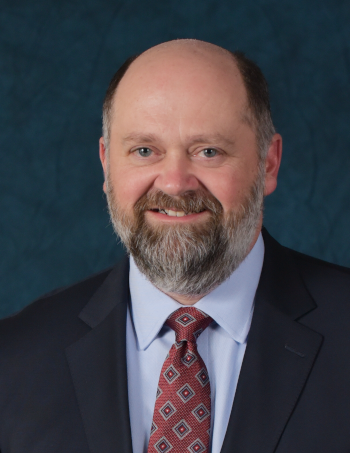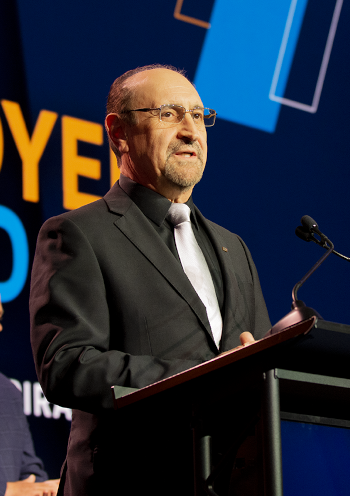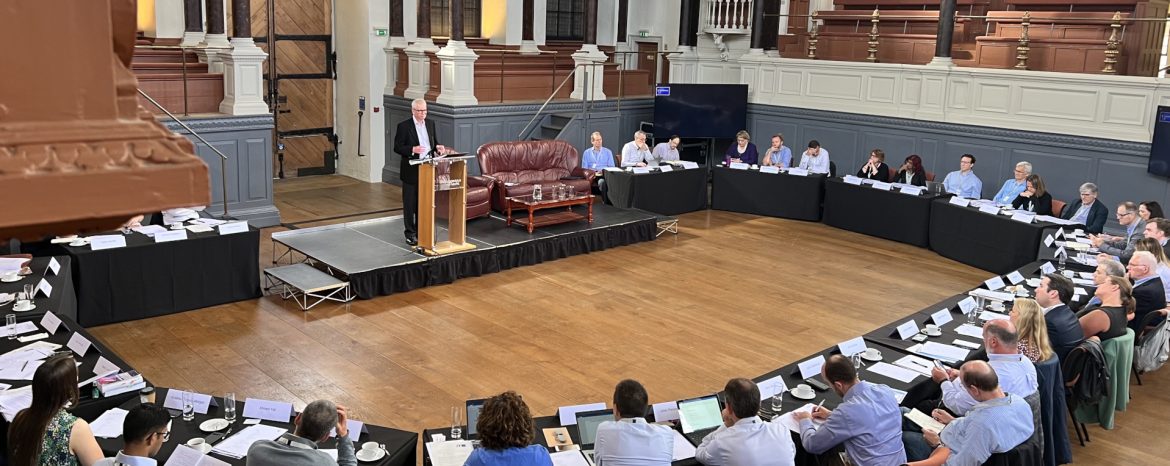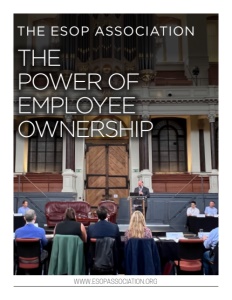The ESOP Association
the power of employee ownership
Representing the growing number of US-based employee-owned businesses through education, advocacy, and putting members first
In the US the relationship between the employer and the employee is changing. No longer viewed as a traditional top-down employee approach, a growing number of US-based businesses are reworking their business models to allow for the employees to be part owners in the company. This company structure is referred to as an ESOP — an Employee Stock Ownership Plan.
The first ESOP was created in 1956 by Louis Orth Kelso, a prominent lawyer, and economist, in order to enable the employees of Peninsula Newspapers Inc., in Palo Alto, California to buy out the company’s founders. Kelso believed that ESOPs would help transform “labor workers” into “capital workers,” thus spurring growth and productivity within the broader economy.
ESOPs were eventually codified by Congress in 1974 under the Employee Retirement Income Security Act (ERISA) to provide a federally regulated vehicle by which a company’s employees could obtain an ownership stake in their company through a Qualified Retirement Plan (QRP), wherein individual employees are allocated company stock into their retirement accounts from a trust fund, and when they leave the company or retire, they cash out with a significant monetary benefit they haven’t had to pay for.
Today, approximately 7,000 U.S. companies are fully or partially owned by more than 11 million employees through an ESOP, and ESOPs can be found in all kinds and sizes of companies.

James Bonham, President & CEO, The ESOP Association
“The concept of ESOPs existed before ERISA, but that was the first codification of ESOPs into law,” explains Jim Bonham, President & CEO of The ESOP Association, the national trade association representing employee-owned businesses and the professionals who provide services to them.
Founded in 1976, with headquarters in Washington, D.C., and 19 state and regional chapters, The ESOP Association has been, according to Bonham, “the nationwide leader in protecting the ESOP structure in federal and state law, expanding the benefits of the programs, and helping to formulate sound regulation and sound policy around employee stock ownership plans.”
Bonham, a recognized expert in public policy, issue advocacy, and executive leadership with years of experience in both government and politics, believes that ESOPs will continue to proliferate at an accelerating pace as their advantages become better known.
“One of the biggest things that you’re hearing from employees nationwide is that they want a stake in their business,” he relates.
“Folks are no longer satisfied with just being paid a salary or a wage; they’re looking for the ability to share in the growth and value of the company. They’re also looking for better workplaces and better job preservation. When employees own the business, they don’t outsource or leave the country; they don’t move it to Mexico or India, or China. And ESOP businesses tend to participate philanthropically in the places where they’re doing business, so there’s a lot of good that’s being done via employee ownership.”
But in order to get the most out of an ESOP, Bonham stresses that a company needs to focus on its culture.
“If you’re simply throwing shares of stock at employees, but not putting the work into creating an ownership mindset among them, the business isn’t going to get a huge benefit out of employee ownership,” he states.

Cindy Turcot, CEO and President at Gardener’s Supply Company
“But if the employees really understand that their contributions on a day-to-day basis add up and that it ultimately benefits them because the value of their ownership stake goes up, those companies will run circles around non-employee-owned businesses,” he outlines. “We see it over and over again in terms of the bottom line profitability, the rate of growth, and the disposition of the employees towards their jobs. And ESOP companies have a much, much lower turnover rate compared to any other type of business.”
“The culture is better so people enjoy working there and they feel more respected and connected to their jobs because they have a financial stake in them. Imagine if you had a restaurant and every person waiting on tables was an owner of that restaurant – the quality of service goes through the roof. So culture is a huge benefit of having an ESOP. If done right, the employees do begin to treat the business as their own,” Bonham explains.
“Now, what’s interesting over the next ten years, is what we have come to call ‘the silver tsunami,’ which is the retirement of Baby Boomers,” Bonham continues.
“There are currently projected to be about 2.5 million business owners over the next ten years who are scheduled to retire — 65% of those business owners have no succession plan (we have stats here from high 50s to low 80s). We have taken what we know of the existing universe of employee-owned businesses and modeled those onto that population and it comes up just short of 300,000 businesses that look just like the demographics of the existing employee-owned businesses in terms of the industries that are represented, the market cap, the number of employees, the locations.”
“So, we think those 300,000 businesses are very ripe opportunities to be converted into an employee-owned businesses. On top of that, Congress is focused on providing even more incentives for business owners to sell to their employees through an ESOP and to provide better regulatory clarity and simplicity to make it easier to form, set up, and operate an ESOP. All of those factors point to a real opportunity for growth in employee ownership over the next ten years,” Bonham further illustrates.
Indeed, according to Bonham, the political machinery in Washington has recently sped up.
“We’ve probably seen more pro-ESOP initiatives in the last 18 months than we’ve seen in the last decade,” he reports. For example, the SECURE Act 2.0 was just signed into law on Dec. 29, 2022, providing businesses and their employees with added incentives related to their retirement plans. The Act also extends certain tax advantages to S Corporations that initially only applied to C Corporations. “Congress is finally beginning to level the playing field between C and S Corporations,” says Bonham.
“That’s another very strong indication that Congress is taking a lot of affirmative steps to promote employee ownership and signal to the marketplace that this is something that both parties would like to see grow over the next ten years.”

Ali Jamshidi, VP of Finance & CFO, CTL Engineering, Inc.
Another new federal law is the WORK (Worker Opportunity, Readiness and Knowledge Act, sponsored in the Senate by Senators Bernie Sanders and Jerry Moran. “That’s another indicator of the broad and bipartisan support for employee ownership,” Bonham notes. “When you can get a conservative Republican from Kansas to co-sponsor a bill with an Independent socialist from Vermont, it tells you that this is probably a pretty good thing.”
“The WORK Act includes several provisions,” Bonham continues. “It creates an office of employee ownership within the U.S. Department of Labor that is tasked with promoting and advancing ESOPs. That’s a big deal because the Department of Labor is our primary regulator. To have an office specifically tasked with promoting this form of ownership – that sends a very strong message to the marketplace that this is a model that our government is strongly trying to encourage.”
“Another aspect is that it provides $50 million worth of grants over the next five years that states can use for the promotion of employee ownership, including providing direct funding and grants for ESOP feasibility studies to be performed by companies that are thinking of forming an ESOP. Those grants can be as much as $50,000 per company. Embedded in there, as well, is language that will direct the U.S. Department of Labor, again, our primary regulator, to promulgate final regulations on how a company should value the shares that are being bought by an ESOP.”
“We are seeing a lot of activity at the state level, as well. Colorado has been the leader with Governor Polis creating a statewide commission to support employee ownership. He also created tax incentives and grants for new ESOP formation. And, sure enough, it’s resulting in a lot more ESOPs being formed in Colorado. And there are other states beginning to follow that model; California is one of them. And although we would have liked to have seen funding attached to the legislation that they passed, they did pass a bill, so that was a first good step. The bottom line is there’s a lot of activity promoting employee ownership right now.”
Bonham adds that the ESOP Association is not advocating for its agenda in a vacuum. “We work with a lot of organizations,” he shares. “For example, at our national conference in Washington, this year, we did a town hall meeting with the National Governors Association and the National Association of Counties to talk about state programs and incentives.”
“We also reach out to other national trade associations; we work with the associations that represent retirement plans; we work with the Chamber of Commerce. There’s a lot of interest and a lot of commonalities to some of the core issues that affect ESOPS, 401(k)s, and other types of qualified retirement plans.
“We’re also doing a lot of work internationally. Our Employee Ownership Foundation (a non-profit organization founded in 1991, of which Bonham is also the President) was the lead sponsor of the 2022 Oxford Symposium on Employee Ownership,” he recalls.
“It’s our mission to continue to grow employee ownership in America and make sure that ESOPs are being operated in an appropriate and sound way.”
“ESOP beneficiaries, or employee-owners, hands-down, have so many additional financial resources compared to non-employee-owners,” Bonham points out.
“The average employee-owner has substantially more than the average American in their savings. For most ESOP participants, it’s either their second or maybe even their top financial asset when they reach retirement; often it’s worth more than even the equity in their home. So the societal good and the individual employee benefits of an ESOP are just massive.”
AT A GLANCE
The ESOP Association
What: The industry body advocating, educating, and promoting employee-owned businesses throughout the US
Where: Washington, DC
Website: https://www.esopassociation.org/



